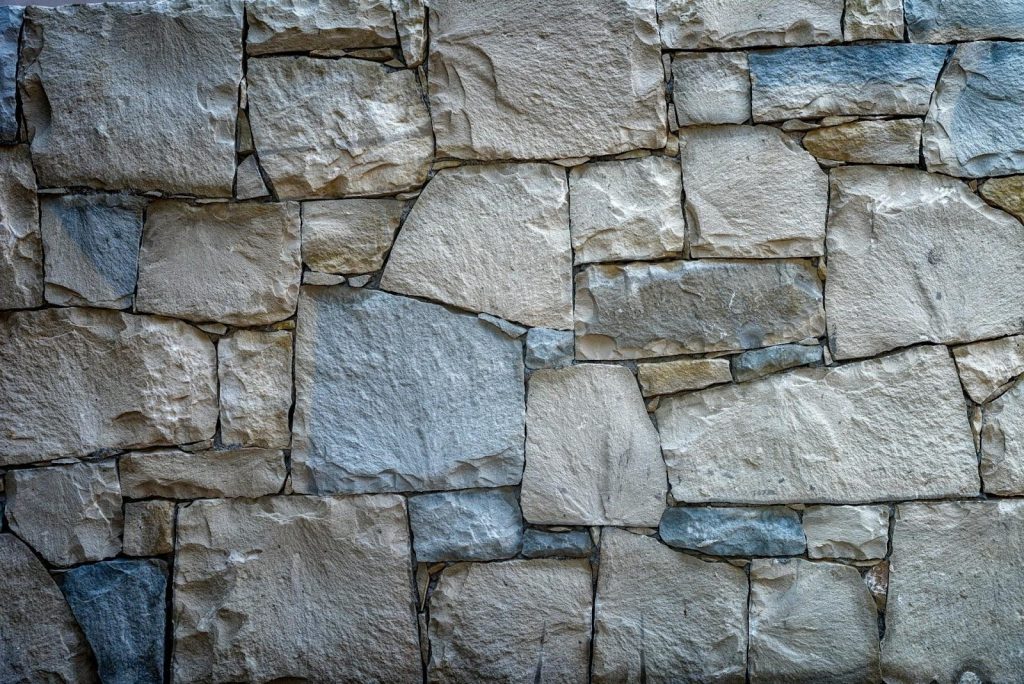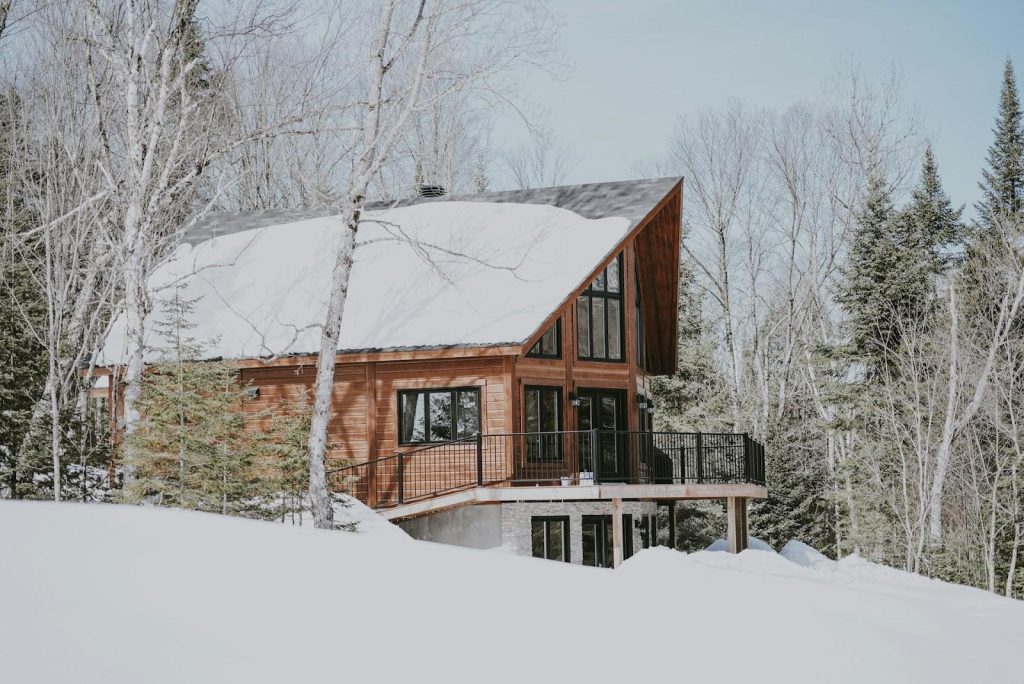Modern Alpine architecture, a mix of many heterogeneous architectural styles, blends the cultural heritage of mountain regions and modern design that caters to contemporary needs. As the needs and expectations of inhabitants change, Alpine architecture continues to adapt, balancing tradition with modernity.
Contemporary architects in the region are creating structures that resonate with the landscape while providing comfortable, modern living spaces. These design efforts highlight how Alpine architecture, though deeply rooted in tradition, is dynamic and ever-evolving, always seeking the perfect balance between the built and the natural, the old and the new.
Historical Context
The historical context of alpine architecture reveals a deep connection between design, environment, and local culture.
Alpine architecture dates back to when inhabitants of the mountains constructed settlements to withstand harsh climates. These early structures, primarily focused on utility and protection, showcase the creativity and resilience of mountain cultures.
The geographical and climatic conditions of the Alpine regions significantly shaped architectural styles. For instance, steeply pitched roofs are a distinct feature developed to prevent heavy snow accumulation, a design still prevalent in modern alpine buildings.
Traditionally, alpine homes were typically square or rectangular with a pitched roof. They featured a compact, regular shape to minimize excavations and building challenges on steep slopes.
Moreover, they were often built using locally sourced materials. The wooden construction was favored due to its availability and insulation properties. Also, the use of stone for foundations and wooden beams for the frames is notable. These methods have been perfected over centuries to create buildings that harmonize with natural beauty.
The aesthetic appeal of mountain houses emerged from these construction techniques, designed to withstand extreme environmental conditions using materials from local sources.
The stone Alpine house
- Stone was used for structures requiring durability and protection for inhabitants and agricultural products.
- The foundation, often without a formal base, rested on solid ground, allowing the house to appear as if it emerged from the earth.
- Construction involved laying stones in horizontal layers, sometimes with lime mortar, with thicker walls for stability.
- Plastering with lime mortars and decorative elements communicated the family’s status or important affiliations.
Wooden and mixed Alpine houses
- Wooden structures required precise design and assembly using techniques like the Blockbau (overlapping logs with interlocking corners), Ritti and Panconi (wooden beams and pillars with insulated walls), and the Crossing technique (pillars and beams tied with cross-wood elements).
- Combining stone and wood, the lower floors often featured stone walls for stability and the upper floors were made of wood for lighter construction.
Roofing
Traditional roofs had a wooden structure, resting on stone or wooden pillars, covered with either stone slabs (Lose, Beole, or Piode) or wooden shingles.
Functional layout
- The layout typically included stables on the ground floor, living spaces on the mezzanine, and storage or additional living spaces on the upper floors.
- External wooden stairs provided access to upper floors, and the positioning of stables and barns helped insulate living areas.
Traditional Architecture of the Alpine Region

The traditional architecture of this region blends perfectly with the mountainous topographies it originates from. It balances between form, function, and the surrounding environment, refined over centuries to adapt to the unique conditions of the Alpine region.
Characteristics of traditional Alpine buildings
Alpine buildings are famous for steep, gabled roofs and broad eaves. These architectural details are not merely aesthetic; they help to shed heavy snowfall and protect the structure’s walls.
Wooden pillars and balconies are common, enhancing both the structural integrity and the visual appeal of these constructions. In this type of architecture, practicality blends with charm, resulting in buildings and chalets that are both quaint and robust.
Use of materials such as wood and stone
These buildings are predominantly crafted from local materials such as wood and stone, connecting them intrinsically to the surrounding landscape. Wood is favored for its availability and insulation properties, often seen in the form of logs or timber frames. On the other hand, the stone is utilized primarily for foundations and as an additional thermal mass, helping to retain heat within the buildings.
Adaptations to harsh winter conditions
Adaptations to the Alpine climate are key aspects of traditional design. Thick walls and small, well-insulated windows minimize heat loss during severe winter conditions. Interiors are compact and often encompass a central hearth or stove that provides heat for both warmth and cooking, creating a quaint living space that is both functional and cozy.
Traditional alpine architecture exemplifies sustainable building practices with room layouts optimized for sunlight exposure, the use of local materials, and the efficient use of heat from animals.
Alpine architecture in cultural heritage
The architecture serves as a living record of Alpine cultures, encapsulating their history and their relationship with the environment. Traditional methods have been preserved and passed down through generations, denoting not just a style of building, but a way of life. Even as modernization takes place, the principles of traditional Alpine architecture continue to influence contemporary designs, ensuring their legacy endures.
Modern Alpine Architecture
Modern Alpine architecture has seen a dramatic transformation, heavily influenced by advancements in building technology and materials. Recognizing the need to blend tradition with innovation, today’s architects approach Alpine constructs with a forward-thinking vision that respects the past while embracing the future.
Preserving traditional forms and embracing innovation, designs incorporate large windows, eco-friendly technologies, and non-traditional materials like metal.
Influence of technological advancements
Technological progress has significantly altered the way architects approach Alpine designs. Utilization of cutting-edge software allows for precise modeling of complex structures that can withstand the harsh mountain conditions in the Alps. This has led to the creation of buildings with large windows that not only offer extensive daylight but also facilitate stunning glacial perspectives.
Integration of modern materials and design principles
Contemporary Alpine buildings embody a fusion of modern materials like steel and glass with traditional wood and stone. This synergy brings forth designs that reflect both the timelessness of Alpine settings and the crisp aesthetics of modernism.
The integration of high thermal insulation materials ensures the structures are energy-efficient while preserving the warm ambience inherent to Alpine homes.
Contemporary alpine buildings often use reinforced concrete for basements, engineered wood for upper floors, and sometimes masonry. Insulation materials include natural options like rock wool, wood fiber, or sheep’s wool.
Challenges of maintaining tradition while innovating
As architects incorporate modern features into the existing building fabric, they strive to maintain the quintessential Alpine character. This often involves delicate design choices that honor iconic silhouettes and regional craftsmanship.
Examples of contemporary Alpine architecture
One prime example of this modern architectural style is the project by Dutch architect Rem Koolhaas, a modern Alpine Lakehouse designed with a focus on transparency and light.
There are also many other notable works that can inspire you if you’re thinking of building or designing something in this style.
Sustainable Alpine Architecture

Sustainable alpine architecture has become pivotal in addressing ecological challenges and promoting environmental awareness in mountainous areas. It applies energy-efficient design principles, utilizes renewable resources and natural materials, and gives rise to eco-friendly structures harmonized with their surroundings.
New alpine buildings aim for energy efficiency with strategies like underground construction, south-oriented windows, maximizing thermal inertia, and using renewable energy sources.
An increasing emphasis has been placed on sustainability and integrating new technologies while respecting the aesthetics of traditional forms.
- Mountain ecosystems are fragile, and sustainable architectural practices aim to minimize environmental impact while maintaining the integrity and beauty of the alpine landscapes. Energy efficiency and sustainability are necessary to ensure the long-term preservation and health of these regions.
- Construction in alpine environments requires sensitivity to the unique climatic conditions. Architects focus on energy-efficient design, which often includes features like enhanced insulation, passive solar heating, and advanced ventilation systems that reduce the need for artificial heating and cooling.
- In sustainable alpine architecture, there is a preference for renewable resources and eco-friendly materials. Builders commonly use natural materials like wood and stone from local sources, reducing the ecological footprint and supporting local economies.
Alpine Buildings Are Truly Unique
Alpine architecture represents a harmonious blend of tradition and innovation. It stands as a testament to human ingenuity in adapting to the rugged mountain environment. Utilizing locally sourced materials and traditional methods, it reflects a respect for the landscape and cultures that have shaped it.
Innovation is equally central to this architectural style. Now, contemporary designs are integrating green technologies and sustainability practices to address future environmental challenges. Alpine architecture is evolving to capture passive solar energy and improve insulation, reducing the carbon footprint of these structures. It continues to honor architectural heritage while pioneering future trends.
If you’re interested in Alpine chalets in Verbier, Switzerland, take a look at our list of properties for sale. Some of them are true examples of Alpine architecture, a style where functionality meets beauty.
